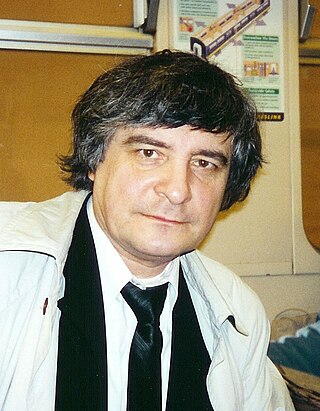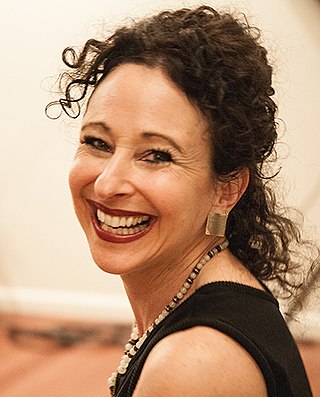Life History and Musical Career
In the 17th c. St. Clairs (or Sinclairs) emigrated from the British Isles to New England as part of the early colonization of North America. Richard St. Clair's maternal ancestors emigrated from Norway and Sweden to the American Upper Midwest (in particular, Minnesota) in the latter part of the 19th century along with hundreds of thousands of other Scandinavians who settled there at that time. So many Norwegian immigrants settled in the Upper Midwest that it is locally referred to as "Little Norway." His paternal ancestors hailed from England and Scotland and were both riders on the Mayflower as well as military men in the American War of Independence.
Richard St. Clair was born in Jamestown, North Dakota. The following year his family moved to Grand Forks, North Dakota, a larger city with much greater musical and cultural opportunities than those of his birthplace. The musical environs of Grand Forks served as the foundation for his life in music. The city boasted its own symphony orchestra, a major university with an active music department, a concert series featuring prominent soloists, and a school system that emphasized music education. For years he sang in both the Centralian concert chorus of his high school (Grand Forks Central High School) and the sanctuary choir of the church (First Presbyterian) which he attended as a child and adolescent. He also sang in the Choral Union, a collaboration between the University of North Dakota and the Grand Forks community. It was these singing experiences that imbued him with a love of choral music which has carried him throughout his musical life, with hundreds of choral compositions to his credit.
Music ran through his family. His maternal great-grandfather Ludvig Svendsen Bogen played in the Norwegian King's Band and his grandfather Sven Fredrik Bogen was a band conductor who played and taught many different instruments; his maternal grandmother was a piano teacher who was reputed for being able to transpose any song into any key. His paternal grandmother was a gifted pianist. His father, Foster York St. Clair (1905–1994) – a Harvard-educated English literature scholar, university professor and poet – and his mother, Elna Ruth Bogen St. Clair (1912–1974) – a business college teacher – were both amateur musicians and classical music-lovers. St. Clair from a very early age fell in love with the music of Mozart, Mendelssohn and Tchaikovsky, which were played in his home on fragile 78-rpm records. At age 3 he began taking piano lessons. By age 16 he was starting to write music, mainly for chorus and organ, inspired by Gustav Holst, Flor Peeters, Randall Thompson and Paul Hindemith.
A turning point in his musical life came in 1963 when he attended on scholarship the International Music Camp in the International Peace Garden on the North Dakota-Canada border. Amidst the intense musical environment, his performances at the piano, together with his then piano teacher Paul Lundquist, were noticed by Professor Earnest Harris, head of the piano department at Moorhead State College (later renamed Minnesota State University Moorhead). Harris, steeped in the pedagogic tradition of Theodor Leschetizky and Carl Czerny and a former pupil of Leonard Shure, gave him a full scholarship to study piano, though he did not continue with his piano studies afterwards, preferring to focus on creating his own music.
Early in his music education, St. Clair was enamored of the music of Edvard Grieg, from whose music he acquired a love for miniaturism and compact musical invention. He was also deeply moved by the music of Robert Schumann, especially the great C Major Fantasia, opus 17. In college, he became engrossed in the piano music of Mozart, Schubert, Schumann and Bartok, playing and absorbing their music over and over again on his Poole upright piano (which he tuned himself since he could not afford a professional piano tuner) in his dingy second-storey Cambridge apartment. This way he acquired a deep love for classical-romantic music, which is strongly present in his own compositions.
In 1970 St. Clair made a solo piano appearance in a recital of his own music in Newburyport, Massachusetts. Reviewer Ned Brown made the following prophetic observations:
We admired St. Cair's expansive genius, his dynamic keyboard skill and his personal modesty. At 24, Richard St. Clair is firmly launched on a musical career which offers great possibilities. [1]
St. Clair, following in his father's footsteps, began his studies at Harvard University in Cambridge (Massachusetts) where in 1969 he earned his Bachelor of Arts (A.B.) with honors in music composition, the first of many Harvard students to write a musical work in lieu of a thesis. While an undergraduate he studied piano techniques (sight-reading and figured bass) with Luise Vosgerchian, harmony with James Haar and John MacIvor Perkins, counterpoint with James Yannatos and Alejandro Enrique Planchart, form and analysis with Luciano Berio, and composition with Billy Jim Layton and Leon Kirchner.
St. Clair's music and the music of his fellow classmate, John Adams, both reacted against the then prevailing academic emphasis on writing music after the manner of twelve-tone and avant-garde composers, most often meaning the music of Arnold Schoenberg and that of Anton Webern, the latter who set the stage for the academic avant-garde that was to emerge in Europe (Boulez, Stockhausen) and America (Carter, Babbitt) in the 1940s into the 1960s and prevails in many quarters even today. Both St. Clair and Adams rejected that school of thought, Adams turning to minimalism (e.g. "Short Ride in a Fast Machine") and St. Clair turning to neo-classicism (e.g. Piano Sonata no. 1). Both St. Clair and Adams have evolved considerably since they first emerged in the 1960s.
In graduate school at Harvard he went on to earn his Master of Arts (A.M.) in 1973 and his Doctor of Philosophy (Ph.D.) in 1978, both degrees in music composition. During his student years he was awarded several prizes for his compositions. At Harvard he studied composition with Roger Sessions, Leon Kirchner, Earl Kim, and David Del Tredici. He studied piano privately with Paul Lundquist, Earnest Harris, and Leonard Shure. As a graduate student he was persuaded by a fellow student at Harvard to study piano with Margaret Chaloff in Boston. After a few lessons it became evident to him that she was grooming him for a career as a concert pianist, against which St. Clair rebelled and decided to continue his aspirations as a composer. He made his debut as a composer with his performance of his avant-garde Piano Piece no. 1 at the Marlboro Music Festival in 1967 as an invitee of his teacher, Leon Kirchner; there he was encouraged by Director Rudolf Serkin to continue to pursue a career in composition. Serkin's laconic comment on St. Clair's Piano Piece No. 1, "It has line." Both Shure and Serkin discouraged St. Clair from pursuing a career as a concert pianist, though St. Clair occasionally performed his own piano compositions in concert. Although his student years were turbulent, he emerged as a successful composer of broad stylistic tastes.
His Missa Syllabica for SATB chorus performed by Boston's Coro Allegro drew the praise of Boston Globe critic Susan Larson for its 'lush, soft-edged harmonic vocabulary...[and] burst of melismatic ecstasy.'
Of his 1994 freely atonal cycle Moon Flowers: Album of 50 Haiku-Moments for Solo Piano on the occasion of the 300th anniversary of the death of the great haiku poet, Matsuo Basho (1644-1694), noted haiku poet Dee Evetts wrote
Richard St. Clair performed his Moon Flowers: Album of Haiku-Moments for Solo Piano. This hypnotic string of phrases was reminiscent (for this listener) of the shakuhachi tradition, 'beads threaded on silence.' [2]
St. Clair's music has been heard far and wide from South America to Europe to Asia and across the United States and Canada. Difficult to describe but generally in the broad category of Neoromanticism (music), his music runs the gamut of pure tonality to avant-garde atonality.
Of his extended motet, Today's Lord's Prayer, noted organist and choir director Joanne Vollendorf Rickards wrote
Our choir was honored...to perform the premiere of Today's Lord's Prayer, ... [a] spine tingling anthem. It was truly spectacular. [3]
His Piano Pieces no. 1 and no.2 composed in his college years are intensely atonal and show the influence of Karlheinz Stockhausen. Since then, however, he has turned to a more approachable style following the tradition of 20th-century masters including Igor Stravinsky, Dmitri Shostakovich, Béla Bartók and Arnold Schoenberg, the latter who taught his teachers Earl Kim and Leon Kirchner. His Love-Canzonettes and other works for chorus and his many ragtime works for piano are completely tonal and classically conceived, as is his Lyric Symphony and his chamber opera, Taema. His string quartets and much of his other music including his Concertino for Wind Band are tonally more challenging and structurally freer. For instance, his First String Quartet is structured freely around the octatonic scale, as is the second movement of his Symphony for String Orchestra, while his Second String Quartet employs a twelve-tone row.
Of St. Clair's The Lamentations of Shinran for Soprano, Tenor and String Quartet, Boston Phoenix music reviewer Lloyd Schwartz wrote in February 2000:
St. Clair has created a fascinating sound world, both charged and atmospheric. His is a stirring and original voice. [4]
Composer David Cleary, writing of the same work in 21st Century Music said,
This nearly half-hour long setting of 13th-century Buddhist poems proves fascinating from start to finish, exhibiting numerous deeply-felt variants on oriental sensitivity and exquisite melancholy. [5]
Writing in New Music Connoisseur (2005), Cleary commented as follows on St. Clair's 2005 cycle, "Songs from the Chinese":
Asian verse has inspired some of Richard St. Clair's most ambitious efforts. Thus it's no surprise that his "Songs from the Chinese", a setting of ten Yuan dynasty poems scored for voice, flute, contrabass, and piano, is satisfying to hear. One encounters pentatonic touches sprinkled throughout its mildly spiced tonal language, but never to the point of parody. And the wide-ranging textual tone elicits comparably varied approaches to vocal and instrumental writing. Yet there's a charming and heartfelt overall ethos to the cycle that ably binds disparate moods.
After twenty-five years of study and practice in Buddhism, St. Clair returned to his Christian roots, exploring and adopting traditional (but non-sectarian) Christianity. His latest works for solo voice and for chorus and orchestra express his rediscovered spiritual home.
In 1969 and 1970 he taught piano at the New England Conservatory in Boston (Massachusetts), and from 1973 to 1977 he taught music history and composition at his alma mater, Harvard University. He also served on the music faculty of Phillips Exeter Academy and Phillips Academy (Andover). Attempting to live the frugal life of a typical composer, he supported himself by taking day jobs at Harvard and MIT. He retired from MIT in 2015. His second symphony, entitled "Hallelujah Choruses" with SATB choir and orchestra, is a bold, if radical, expression of praise unto God, the sole lyrics for the entire 50-minute neo-classic work is the word, "Hallelujah" = Praise God.







